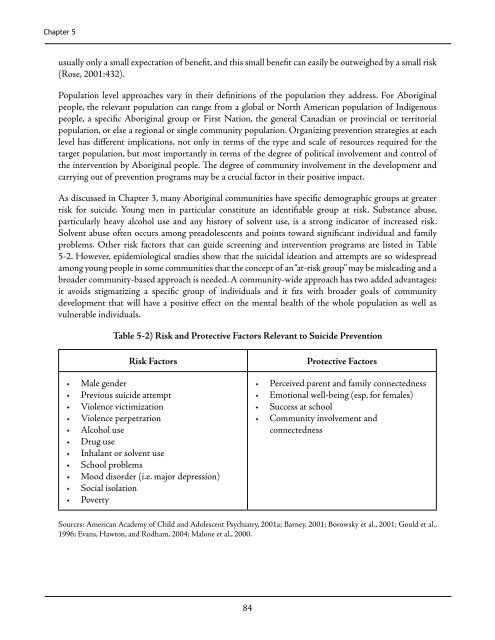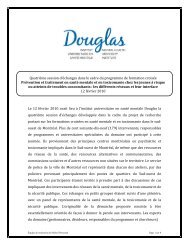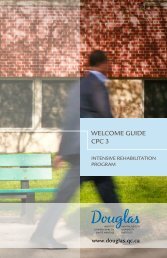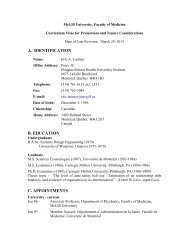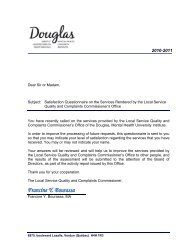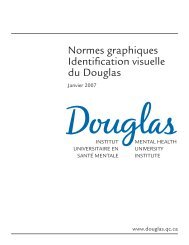Suicide Among Aboriginal People in Canada - Institut universitaire ...
Suicide Among Aboriginal People in Canada - Institut universitaire ...
Suicide Among Aboriginal People in Canada - Institut universitaire ...
You also want an ePaper? Increase the reach of your titles
YUMPU automatically turns print PDFs into web optimized ePapers that Google loves.
Chapter 5usually only a small expectation of benefit, and this small benefit can easily be outweighed by a small risk(Rose, 2001:432).Population level approaches vary <strong>in</strong> their def<strong>in</strong>itions of the population they address. For <strong>Aborig<strong>in</strong>al</strong>people, the relevant population can range from a global or North American population of Indigenouspeople, a specific <strong>Aborig<strong>in</strong>al</strong> group or First Nation, the general Canadian or prov<strong>in</strong>cial or territorialpopulation, or else a regional or s<strong>in</strong>gle community population. Organiz<strong>in</strong>g prevention strategies at eachlevel has different implications, not only <strong>in</strong> terms of the type and scale of resources required for thetarget population, but most importantly <strong>in</strong> terms of the degree of political <strong>in</strong>volvement and control ofthe <strong>in</strong>tervention by <strong>Aborig<strong>in</strong>al</strong> people. The degree of community <strong>in</strong>volvement <strong>in</strong> the development andcarry<strong>in</strong>g out of prevention programs may be a crucial factor <strong>in</strong> their positive impact.As discussed <strong>in</strong> Chapter 3, many <strong>Aborig<strong>in</strong>al</strong> communities have specific demographic groups at greaterrisk for suicide. Young men <strong>in</strong> particular constitute an identifiable group at risk. Substance abuse,particularly heavy alcohol use and any history of solvent use, is a strong <strong>in</strong>dicator of <strong>in</strong>creased risk.Solvent abuse often occurs among preadolescents and po<strong>in</strong>ts toward significant <strong>in</strong>dividual and familyproblems. Other risk factors that can guide screen<strong>in</strong>g and <strong>in</strong>tervention programs are listed <strong>in</strong> Table5-2. However, epidemiological studies show that the suicidal ideation and attempts are so widespreadamong young people <strong>in</strong> some communities that the concept of an “at-risk group” may be mislead<strong>in</strong>g and abroader community-based approach is needed. A community-wide approach has two added advantages:it avoids stigmatiz<strong>in</strong>g a specific group of <strong>in</strong>dividuals and it fits with broader goals of communitydevelopment that will have a positive effect on the mental health of the whole population as well asvulnerable <strong>in</strong>dividuals.Table 5-2) Risk and Protective Factors Relevant to <strong>Suicide</strong> PreventionRisk Factors• Male gender• Previous suicide attempt• Violence victimization• Violence perpetration• Alcohol use• Drug use• Inhalant or solvent use• School problems• Mood disorder (i.e. major depression)• Social isolation• PovertyProtective Factors• Perceived parent and family connectedness• Emotional well-be<strong>in</strong>g (esp. for females)• Success at school• Community <strong>in</strong>volvement andconnectednessSources: American Academy of Child and Adolescent Psychiatry, 2001a; Barney, 2001; Borowsky et al., 2001; Gould et al.,1996; Evans, Hawton, and Rodham, 2004; Malone et al., 2000.84


